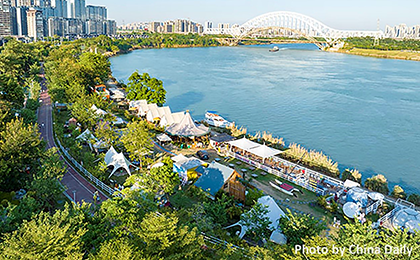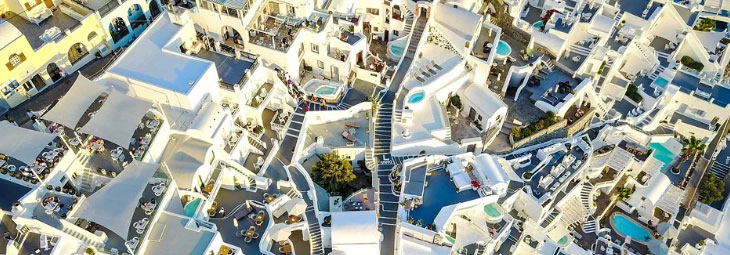



▲ Nanning, the capital of Guangxi Zhuang autonomous region, is the closest Chinese provincial capital city to ASEAN countries. [China Daily].
5. Planning Contents.
5.2 High-efficiency agglomerating to enhance the core function of regional development.
(1) Cultivating the core engine for Guangxi’s high-quality development.
Implement the national opening-up strategy, and build the Nanning metropolitan circle to high standards. Strengthen Nanning's gathering power, carrying capacity, and radiating capability, positioning it as the core growth pole driving the high-quality development of Guangxi and the Beibu Gulf City Cluster while promoting integrated development with surrounding regions.
(2) Developing an intensive, efficient, green, and open Nanning metropolitan circle.
Strengthen the synergy of the three major directions of seaward, eastward integration, and borderward, to boost Nanning’s regional influence and development level, and optimize the coordinated development and utilization of land within the metropolitan circle.
Seaward: advance both land and sea connectivity and foster twin-city synergies to build dual axes for maritime development, establishing Nanning as a strategic highland for Guangxi’s marine economy.
Eastward: optimize the spatial layout of towns along river corridors and accelerate the development of the Pearl River-Xijiang River Economic Belt.
Borderward: strengthen land-based connectivity and leverage twin ports to drive high-quality development along the Nanning-Hanoi Economic Corridor.
(3) Building a national comprehensive transportation hub city.
Enhance strategic backbone corridors and improve domestic and international connectivity by constructing six major land transport corridors. Promote efficient linkages with core cities in neighboring urban clusters, particularly in regions such as the Beibu Gulf, the Pearl River Delta, the middle reaches of the Yangtze River, Chengdu-Chongqing, and central Yunnan. This will enable integrated development across key cross-border regions.
(4) Strengthening ASEAN-Oriented transportation and logistics functions.
Develop a multi-directional and multimodal transportation system, both internally and externally, focusing on safety, convenience, green, and low-carbon principles. Key initiatives include: establishing a "one-primary, multi-secondary" rail freight hub and a "three-primary, three-secondary" rail passenger hub pattern; building a multimodal transport hub combining Nanning Port and Qinzhou Port along the Pinglu Canal, promoting coordinated development of Nanning Port with Guangxi's Beibu Gulf Port; enhancing the international land port system (including Nanning International Railway Port and Road Port) and building a regional aviation hub targeting Southeast Asia.
Developing a three-tier logistics hub system of “international hub, regional comprehensive hub, and local service hub” to strengthen logistics services targeting ASEAN markets, support national logistics hub construction, and enhance the service capacity of regional aviation, rail, and port logistics hubs.
(5) Structuring the “One Core and Two Wings” industrial spatial layout.
“One Core” focuses on developing the headquarters economy, modern finance, the digital economy, and scientific and technological research and development (Wuxiang New District), establishing Nanning as a hub for innovation and headquarters bases.
“Eastern Wing” ((Eastern New Town) focuses on industries such as new energy vehicles and components, new energy battery materials, chemical new materials, and wood product processing to build an advanced manufacturing and port-industrial base.
“Western Wing” (two ports and one zone) focuses on export manufacturing of critical materials and components for ASEAN, as well as airport-driven industries, forming a cluster for cross-border industries and hub economy activities.
(6) Securing industrial land through industrial land control lines.
By 2035, industrial land in the central urban area, Wuming sub-city center, Eastern New Town, and the Airport Economic Demonstration Zone will account for no less than 20% of the urban construction land within the metropolitan area.
(7) Enhancing the quality of county industrial development.
Enhancing the benefits of Guangxi Park (Nanning branch park) within the Binyang section of the Guangdong-Guangxi-Guizhou-Yunnan High-Speed Rail Economic Belt Cooperation Zone, Hengzhou Agricultural, Forestry, and Health-care Industry Cluster, and industrial clusters such as Shanglin Xiangshan, Mashan Subo, and Long'an Baota. Actively develop advantageous featured industries such wood products, food processing, building materials, and papermaking to promote the differentiated, specialized, and high-quality development of county industrial clusters.
5.3 Upgrading green city to build an ecologically livable capital city for Guangxi Zhuang Autonomous Region.
(1) Strengthening the protection and utilization of history and culture.
Establish a historical and cultural heritage protection system, coordinate the protection and utilization of historical and cultural resources in the whole area, and strengthen spatial controls over factors such as building height, volume, and color, particularly along the Yongjiang River. Conserve historical urban areas and historical and cultural neighborhoods to shape the unique urban characteristics of Nanning as the capital of the Guangxi Zhuang Autonomous Region and the Green City of China.
(2) Establishing an attractive scenic spatial layout of “One Belt and Four Rings”.
“One Belt” refers to the scenic belt along the Youjiang River-Yongjiang River-Yujiang River.
“Four Rings” refers to the central urban scenic ring, the Daming Mountain scenic ring, the Xijin National Wetland scenic ring, and the Dawangtan National Wetland scenic ring.
Source:<https://mp.weixin.qq.com/s/pIvve09Ct3OLzU2iJOcjDQ>
Editor & Translator: GUO Xinxin